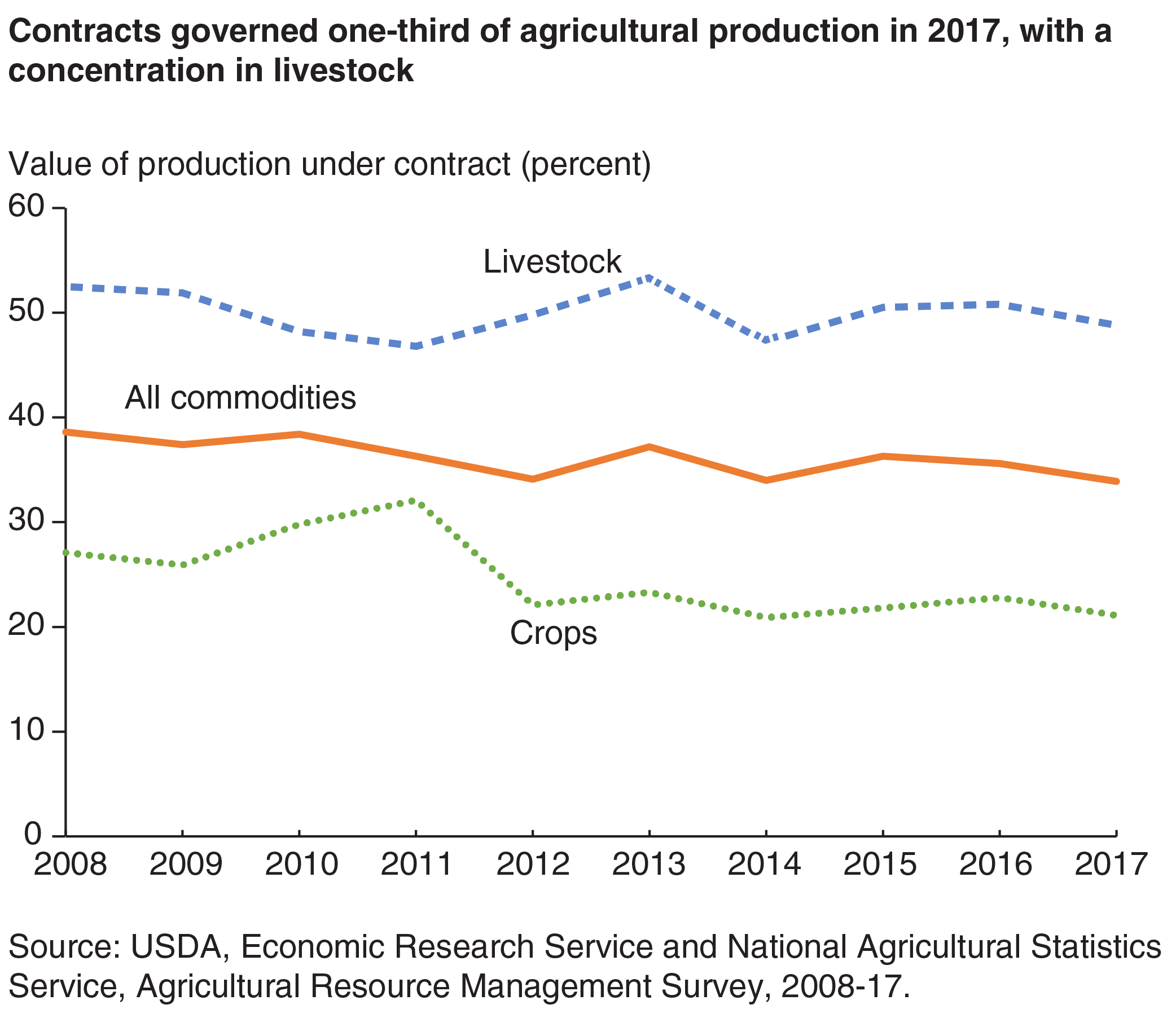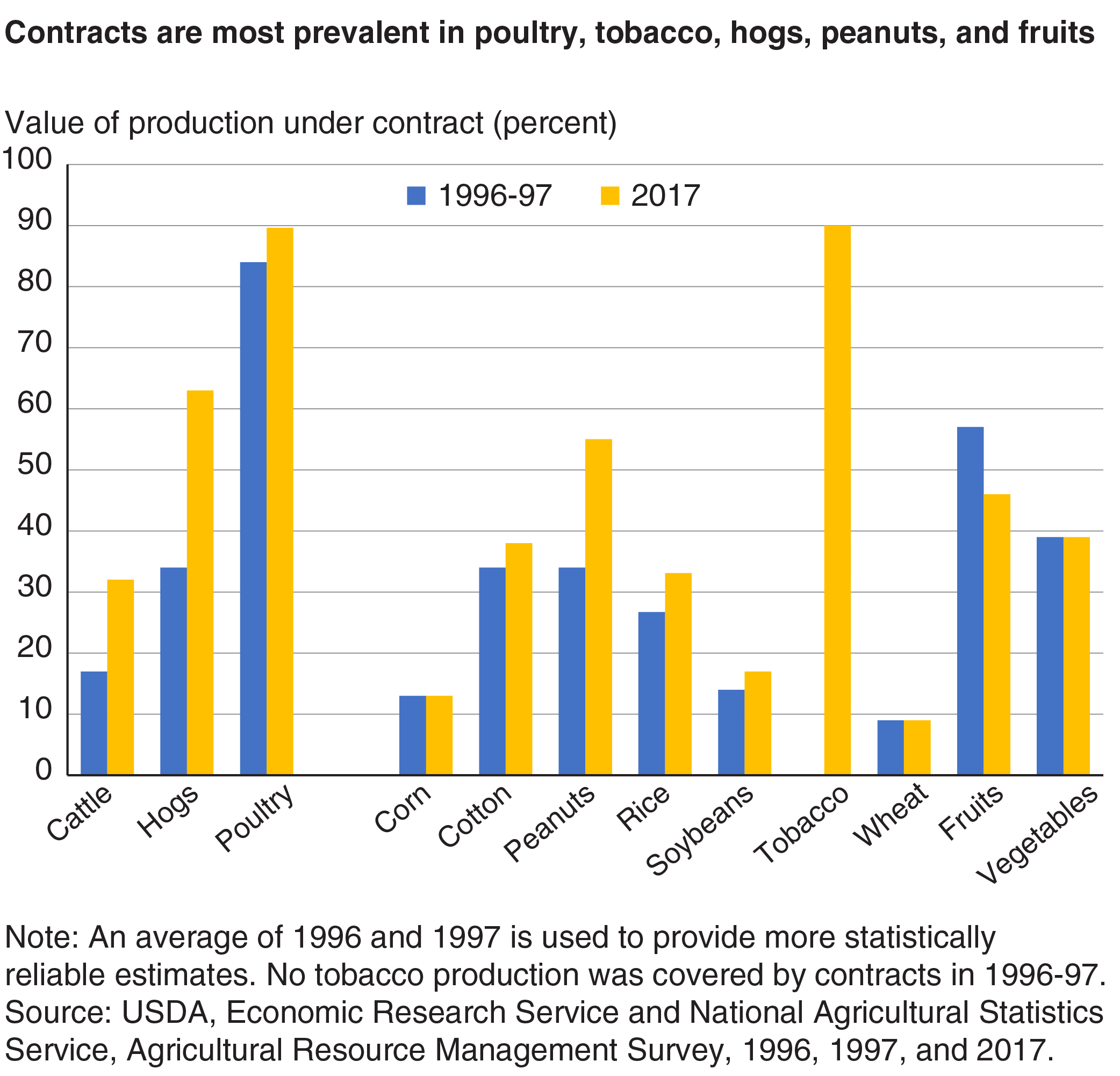
Marketing and Production Contracts Are Widely Used in U.S. Agriculture
- by James M. MacDonald and Christopher Burns
- 7/1/2019
Contracts are widely used in the production and sale of U.S agricultural commodities. In 2017, 49 percent of the value of livestock production was raised under contract agreements—usually between farmers and processors—while contracts governed 21 percent of the value of crop production. The share of crops produced under contract has declined in recent years as farmers turned to other methods for managing risks.
Contracts provide farmers with one tool for managing income risks; others include diversification, hedging through futures markets, and investing in storage. Farmers also use contracts to obtain compensation for higher product quality, create specific outlets for products, and provide assurance for debt financing. Processors use contracts to maintain timely flows of products with desired attributes and greater control over the characteristics and consistency of the products they acquire.
Contracts cover relatively small shares of corn, soybean, and wheat production—and there has been little change in those shares in 20 years. Most poultry is produced under contract, and what is not produced under contracts between processors and growers is raised in facilities operated directly by processors. Contract use grew sharply between 1996-97 and 2017 in peanuts, tobacco, and hogs. Changes in Federal commodity programs led to important shifts in marketing channels for peanuts and tobacco, while the expansion of contracting in hogs was part of a major industry reorganization toward larger facilities that are tightly integrated with one another.
Across all commodities, the value of contract production was nearly evenly split between marketing and production contracts in 2017. However, the use of contract types varies sharply across commodities. Most contract crop production, except for seeds and some processing vegetables, uses marketing contracts. In livestock production, although marketing contracts are used in dairy and cattle, production contracts are extensively used in hogs and poultry. Some hogs may even be raised under a production contract between a grower and an integrator (an intermediary that coordinates production) and then sold by the integrator under a marketing contract with a processor.
Only 8.1 percent of U.S. farms use contracts. Small family farms—those with less than $350,000 in sales—accounted for 88.8 percent of all U.S. farms in 2017 and 54.3 percent of farms with contracts. Large-scale family farms, with at least $1 million in sales, amounted to 2.8 percent of U.S. farms and 14.6 percent of farms with contracts.
Small family farms accounted for about 26 percent of all agricultural production in 2017 and a similar share of contract production. Large-scale family farms accounted for 39 percent of all production and 36 percent of contract production. However, the focus of contract production differed between small and large-scale family farms. Small farms often raised poultry or hogs under production contracts, while large-scale family farms produced 54 percent of crops sold under marketing contracts.
This article is drawn from:
- Burns, C. & MacDonald, J.M. (2018). America’s Diverse Family Farms: 2018 Edition. U.S. Department of Agriculture, Economic Research Service. EIB-203.
You may also like:
- MacDonald, James M., “Trends in Agricultural Contracts”. (2015). Choices: The Magazine of Food, Farm, and Resource Issues.






